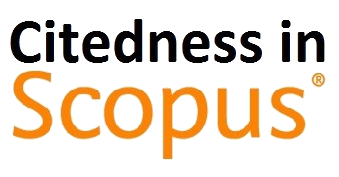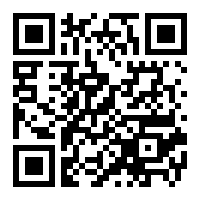Higher Education e-Learning Usability Analysis Using System Usability Scale
(1) S1 Information System, Institut Teknologi Telkom Purwokerto
(2) S1 Information System, Institut Teknologi Telkom Purwokerto
(3) S1 Information System, Institut Teknologi Telkom Purwokerto
(*) Corresponding Author
Abstract
The COVID-19 pandemic encourages almost every institution to optimize the use of information and communication technology to maintain consistency and competitive advantage. One of the efforts made by Higher education is developing and optimizing online-based learning (e-learning) models. E-learning plays an important role in the success of achieving learning objectives at Telkom Institute of Technology Purwokerto (ITTP), which is conducted between lecturers and students. The problem faced in optimizing e-learning system at ITTP is related to usability. The purpose of this study is to evaluate the usability level of the ITTP e-learning system using the System Usability Scale (SUS) method. Based on the testing of questionnaire instruments using SPSS software, it was obtained the result that the questionnaire used for the study was valid, and the reliability rate was 0.758. Based on the results of system tests to 100 respondents or users, it is known that the SUS score is 55.3. The value indicates that the acceptability ranges are in the Marginal Low range. It can be seen from the adjective rating, SUS score from the ITTP e-learning system is in the CATEGORY OK and according to Curved Grade Scale (CGS) is in grade D. Based on Net Promoter Scale (NPS), the score 55.3 indicates that the ITTP e-learning system users tend to be in the Detractor category.
Full Text:
PDFReferences
D. Pal and V. Vanijja, “Perceived usability evaluation of Microsoft Teams as an online learning platform during COVID-19 using system usability scale and technology acceptance model in India,” Child. Youth Serv. Rev., vol. 119, no. July, p. 105535, (2020), doi: 10.1016/j.childyouth.2020.105535.
G. Emmanuel and S. S. Kusumawardani, “Pengembangan Model Proses Bisnis eLisa Dalam Pencapaian Tujuan Pembelajaran Universitas,” Jatisi, vol. 7, no. 1, pp. 42–55, (2020).
S. S. Lee and W. Wella, “Analisis Technology Acceptance Model Penggunaan E-Learning pada Mahasiswa,” Ultim. InfoSys, vol. 9, no. 2, pp. 70–78, (2019), doi: 10.31937/si.v9i2.913.
K. Abuhlfaia and E. de Quincey, “Evaluating the usability of an e-learning platform within higher education from a student perspective,” ACM Int. Conf. Proceeding Ser., pp. 1–7, (2019), doi: 10.1145/3371647.3371661.
R. J. M. Ventayen, K. L. Estira, M. J. De Guzman, C. M. Cabaluna, and N. N. Espinosa, “Usability Evaluation of Google Classroom: Basis for the Adaptation of GSuite E-Learning Platform,” Asia Pacific J. Educ. Arts Sci., vol. 5, no. 1, pp. 47–51, (2018).
J. Sulaiman, T. Zulkifli, K. S. K. Ibrahim, and N. K. M. Noor, “Implementing usability attributes in E-learning system using hybrid heuristics,” 2009 Int. Conf. Inf. Multimed. Technol. ICIMT 2009, pp. 189–193, (2009), doi: 10.1109/ICIMT.2009.43.
M. O. Leavitt, Research-based web design & usability guidelines, vol. 2009, no. July 12. Washington: U.S. Government Printing Office, (2006).
I. H. N. Aprilia, P. I. Santoso, and R. Ferdiana, “Pengujian Usability Website Menggunakan System Usability Scale Website Usability Testing using System Usability Scale,” J. IPTEK-KOM, vol. 17, no. 1, pp. 31–38, (2015).
ISO, “INTERNATIONAL STANDARD 9241-11:2018 Usability : Definitions and concepts,” (2018).
J. Nielsen, “Usability 101: Introduction to Usability,” Usability, (2012). [Online]. Available: https://www.nngroup.com/articles/usability-101-introduction-to-usability/. [Accessed: 30-Oct-2020].
J. Brooke, “SUS - A quick and dirty usability scale. Usability evaluation in industry,” vol. 189, no. 194, pp. 4–7, (1996), doi: 10.4236/9781618961020_0002.
R. A. Grier, A. Bangor, P. Kortum, and S. C. Peres, “The system usability scale: Beyond standard usability testing,” Proc. Hum. Factors Ergon. Soc., pp. 187–191, (2013), doi: 10.1177/1541931213571042.
J. R. Lewis, “Measuring Perceived Usability: The CSUQ, SUS, and UMUX,” Int. J. Hum. Comput. Interact., vol. 34, no. 12, pp. 1148–1156, (2018), doi: 10.1080/10447318.2017.1418805.
J. Sauro and J. R. Lewis, “When designing usability questionnaires, does it hurt to be positive?,” Conf. Hum. Factors Comput. Syst. - Proc., no. May 2011, pp. 2215–2223, (2011), doi: 10.1145/1978942.1979266.
Sugiyono, Metode Penelitian Pendidikan Pendekatan Kuantitatif, Kualitatif, dan R& D. Bandung: Alfabeta, (2015).
A. Bangor, T. Staff, P. Kortum, J. Miller, and T. Staff, “Determining what individual SUS scores mean: adding an adjective rating scale,” J. usability Stud., vol. 4, no. 3, pp. 114–123, (2009).
J. Brooke, “SUS : A Retrospective,” J. usability Stud., vol. 8, no. 2, pp. 29–40, (2013).
U. Ependi, F. Panjaitan, and H. Hutrianto, “System Usability Scale Antarmuka Palembang Guide Sebagai Media Pendukung Asian Games XVIII,” J. Inf. Syst. Eng. Bus. Intell., vol. 3, no. 2, p. 80, (2017), doi: 10.20473/jisebi.3.2.80-86.
S. T. Safitri, D. M. Kusumawardani, C. Wiguna, D. Supriyadi, and I. Yulita, “MEASUREMENT OF VALIDITY AND RELIABILITY OF CUSTOMER SATISFACTION QUESTIONER in E-BOARDING APPICATIONS,” J. Pilar Nusa Mandiri, vol. 16, no. 1, pp. 1–6, (2020), doi: 10.33480/pilar.v16i1.1069.
J. R. Lewis and J. Sauro, “Item Benchmarks for the System Usability Scale,” J. Usability Stud., vol. 13, no. 3, pp. 158–167, (2018).
J. Sauro, “Does Better Usability Increase Customer Loyalty?,” Measuring U, (2010). [Online]. Available: http://www.measuringu.com/usability-loyalty.php. [Accessed: 01-Nov-2020].
P. Korneta, “Net promoter score, growth, and profitability of transportation companies,” Int. J. Manag. Econ., vol. 54, no. 2, pp. 136–148, (2018), doi: 10.2478/ijme-2018-0013.
DOI: https://doi.org/10.30645/ijistech.v4i1.81
Refbacks
- There are currently no refbacks.
Jumlah Kunjungan:
Published Papers Indexed/Abstracted By:












